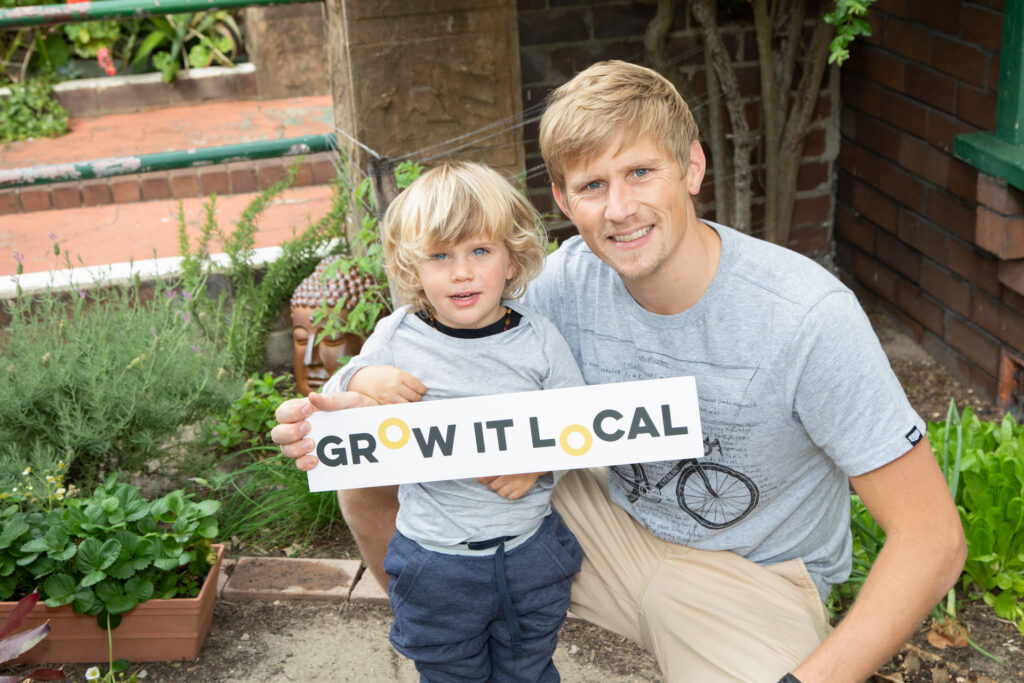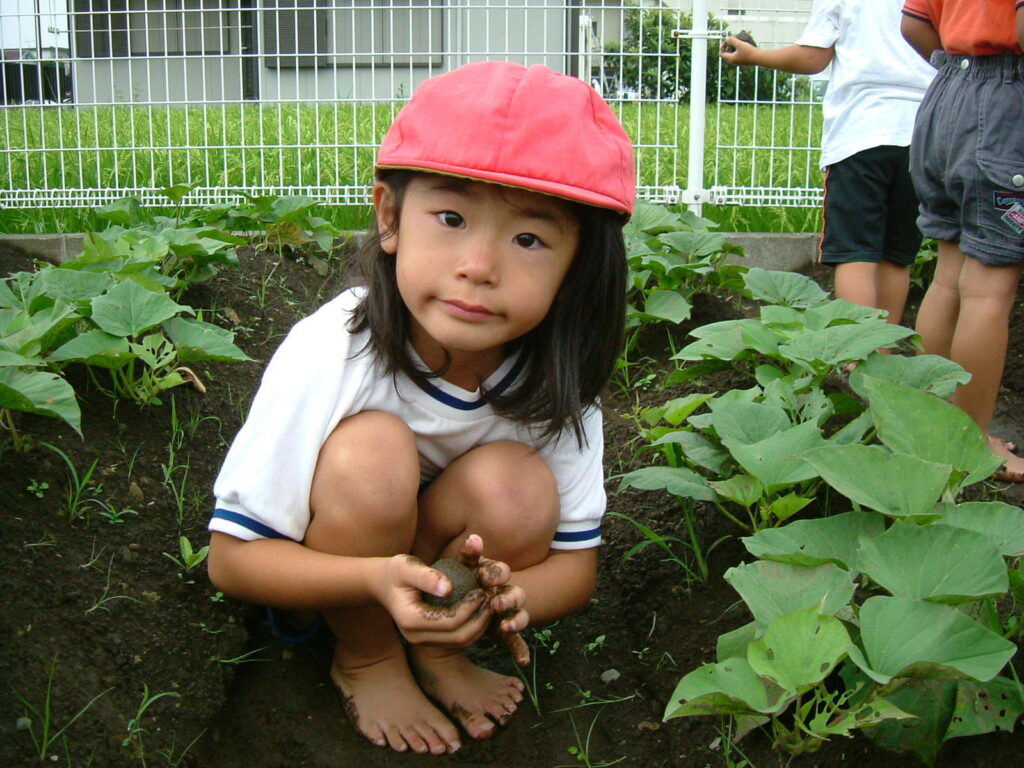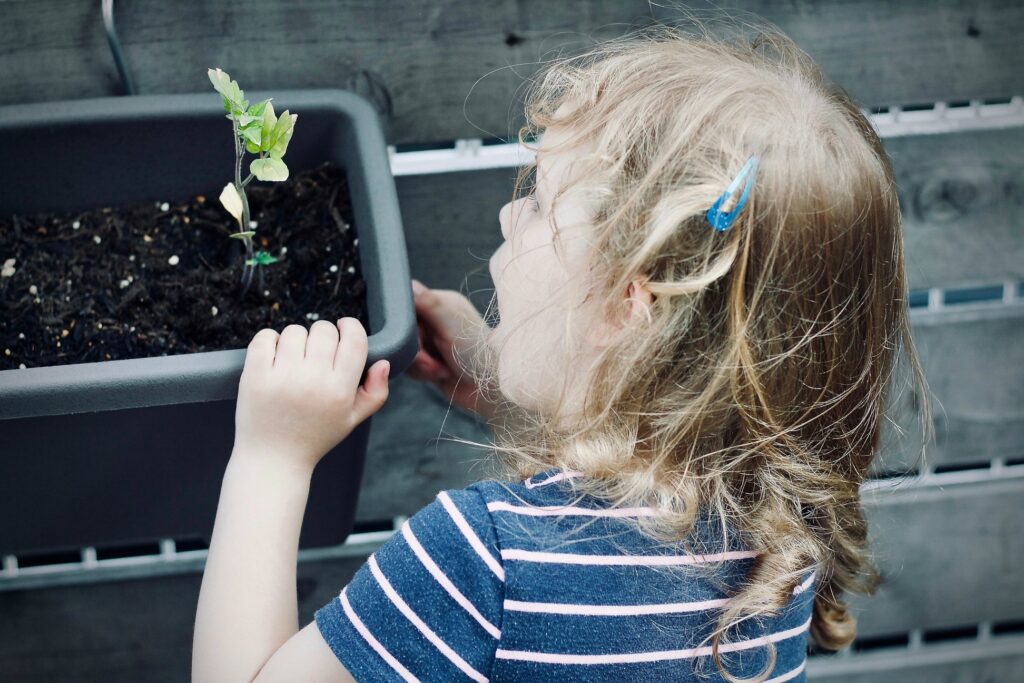Learn to grow microgreens at home, join Grow It Local +
Learn > How To
Growing Fruit & Vegetables with Kids

Whether they’re climbing trees, digging in the dirt or observing insects – children love to be outside. However, as technology becomes an increasing distraction many children are missing out on the adventures to be had exploring nature. Getting kids involved in the garden is not only a great way to reconnect children to the outdoors, it’s also a fun and simple way to teach children where their food comes from.

Five reasons why you should start a kids’ garden today
It’s a creative outlet for children, involving all the senses
From smelling the flowers and tasting freshly grown produce, to listening to the birds chirping away – all five of your children’s senses will constantly be at work in their vegetable garden.
It encourages healthy eating
Eating lots of fruit and veg is important for children’s health. Getting them to finish their veggies, on the other hand, is not always easy. When children grow their own fruit and vegetables, it’s so much fun that reaching their five-a-day will no longer be a task!
It teaches children responsibility
Growing and maintaining a vegetable garden is all about responsibility. Without watering the plants, you won’t have anything to harvest at the end of the season. Getting children involved in the garden teaches them important life skills whilst having fun.

It’s great exercise
If there’s one thing that most children are not lacking, it’s energy! Maintaining a vegetable garden is a great way to keep kids active – from watering plants to digging soil, gardening can be a great form of exercise!
It helps develop an appreciation for the environment
Watching a small seed develop into an edible fruit is an incredible experience. A kids’ garden teaches children to be patient and to take care of everything from the soil, the insects and the plants. It also builds a long-lasting relationship between the child and the nature around them.
Getting Started
Getting involved with what to grow and where to grow it is part of the fun, so make sure the children are involved when planning the kids’ garden. When deciding on a location, remember that the space needs to be easily accessible for children, whilst also receiving lots of sunshine. If you’ve got space, then building a slightly raised bed might be a good idea. If you’re limited to a balcony or a small space, then a container garden works great too! Whatever you choose, remember that plants require around 20-30 centimetres soil depth to develop healthy roots.
Adult sized tools will be too heavy for kids so you might want to invest in children’s gardening equipment like gloves, spades, wheelbarrows and buckets. Next, dedicate a space where they can keep their garden tools. This will teach them the responsibility of cleaning the tools and putting them back once they’ve been used. Whether it’s digging up soil, watering the plants or de-weeding the bed, get the kids as involved as possible and most importantly, have fun!
Take a look at our guide below to see what fruit, vegetables and herbs work great for a kids’ garden. We’ve made it simple and broken it down depending on where you are and what season you’re experiencing.

Simple fruit, vegetables and herbs to grow year round
Spring (September, October, November)
Cool/Temperate Zones: carrots, peas, strawberries, basil, lemon balm, mint, sunflowers
Tropical/Subtropical Zones: carrots, radishes, sweet corn, lemon balm, mint, basil
Dry/Arid Zones: carrots, peas, radishes, sunflowers, basil, watermelons, spring onions
Summer (December, January, February)
Cool/Temperate Zones: carrots, chives, basil, radishes, watermelons, strawberries, sweetcorn
Tropical/Subtropical Zones: lettuce, basil, sweet corn, sunflowers, watermelons
Dry/Arid Zones: carrots, basil, radishes, watermelons, chives, sunflowers
Autumn (March, April, May)
Cool/Temperate Zones: lettuce, radishes, cauliflower, turnips
Tropical/Subtropical Zones: strawberries, basil, carrots, lettuce, peas, sunflowers, sweetcorn, watermelons, mint, lemon balm
Dry/Arid Zones: carrots, radishes, peas, lettuce, sunflowers, watermelons
Winter (June, July, August)
Cool/Temperate Zones: cauliflower, turnips, radishes
Tropical/Subtropical Zones: basil, cauliflower, mint, lemon balm, pumpkin, sunflowers, sweetcorn, watermelons
Dry/Arid Zones: carrots, lettuce, mint, lemon balm, radishes, peas, chives

Fun recipes for kids
Keeping a vegetable garden and growing your own produce is fun, but so is eating them! Take a look at the following recipes to get some inspiration for how to get your kids involved not only in the garden but also in the kitchen:



